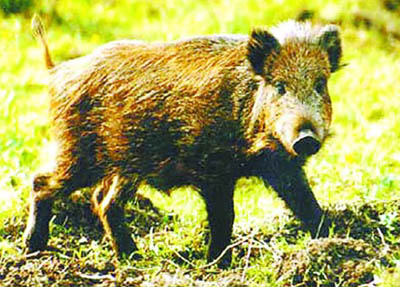Forestry authorities in northeast China's Heilongjiang Province today announced they have approved a proposed plan to cull 200 wild boars in the province this year.
File photo: a wild boar
The number is far lower than in the previous two years, despite residents' complaints that a surging boar population is threatening crops and homes.
Tao Jin, chief of the plant and animal protection section of the provincial forestry bureau, said the province's decision to retain the cull plan didn't mean anyone could simply go out and kill wild boars.
"Wild boars, however, will be culled if they make frequent invasions into villagers' homes or destroy crops," said the official.
He said the wild boar population had been exploding. The species' population had more than doubled from 30,000 in 2000 to more than 70,000 at present, and reports of boar intrusions into homes and planted areas in the province have also increased.
Residents of Luojiadian Village in Laoheishan Township, Dongning County complain during summer and autumn that herds of wild boars are destroying maize fields.
"Sometimes, we scare them away by setting off firecrackers," said one villager. But in general, villagers complain, they are not able to drive most of the boars away for long.
Last year, officials in Heilongjiang approved a plan to cull 700 wild boars but suspended that plan after about 10,000 local residents signed a petition against the proposal.
Opponents of the cull, led by wildlife enthusiasts including members of an organization at Harbin Institute of Technology, voiced concern that the cull could get out of government control.
China's laws on wild animals ban the hunting of animals under state protection, but wild boars are not on that list.
Last August, China held its first auction of hunting licenses, which would allow individuals to hunt wild animals, such as yaks.
The sale was postponed after it triggered a controversy, particularly in online chat rooms. Opponents said that many hunters might be driven by the quest for profit, which would have a fatal impact on wildlife conservation in China.
The government has been trying to resolve the conflict between wildlife conservation and improving rural living standards. In rural areas, livelihoods depend on yields from farming and natural areas.
According to the State Forestry Administration (SFA), China's wildlife conservation in recent decades has increased the population of animals such as wolves, red deer, bears and yaks, putting pressure on ecological systems because of the lack of natural predators.
All About Wild boar
(Xinhua News Agency November 28, 2007)






